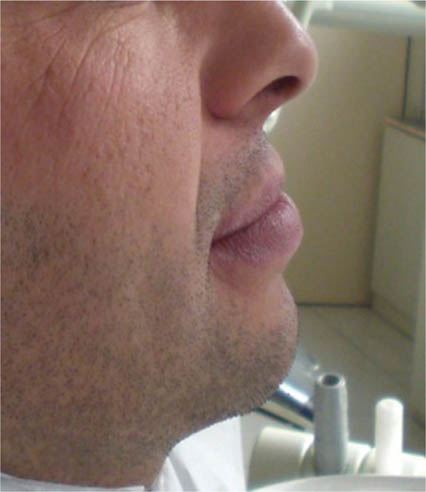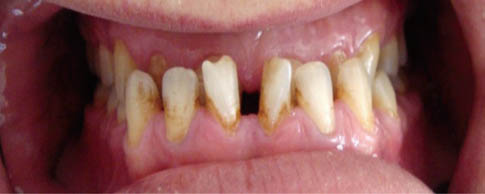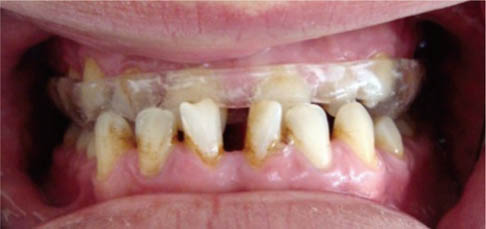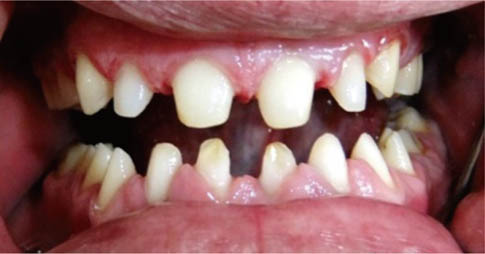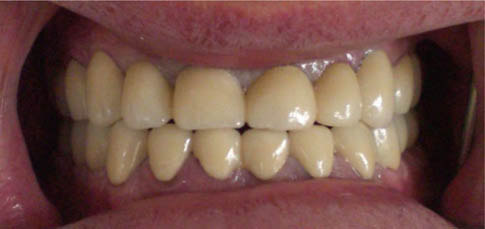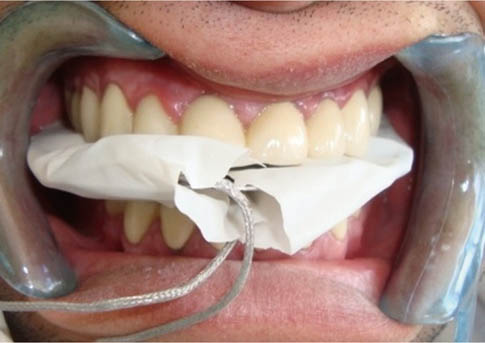J Adv Prosthodont.
2013 Aug;5(3):364-368. 10.4047/jap.2013.5.3.364.
The evaluation of maximum bite force in the occlusal rehabilitation of patient with Angle Class III malocclusion: a case report
- Affiliations
-
- 1Department of Prosthodontics, Faculty of Dentistry, Gazi University, Ankara, Turkey. dtduygukc@hotmail.com
- KMID: 2118178
- DOI: http://doi.org/10.4047/jap.2013.5.3.364
Abstract
- The case report describes the occlusal rehabilitation of a male patient with Angle Class III malocclusion and its effect on maximum bite force. The main complaints of patient were masticatory difficulty and poor esthetic. The patient's expectations from the treatment were a good esthetic and function with a less invasive and relatively promptly way. Therefore, increasing of the occlusal vertical dimension (OVD) and then restoring the maxillary and mandibular teeth was chosen by the patient among the treatment options. At the beginning of treatment maximum bite force of patient was measured. Then an occlusal splint was provided to evaluate the adaptation of the patient to the altered OVD. Full mouth rehabilitation with metal ceramic restorations was made. After the completion of full mouth restoration, bite force measurement was repeated and patient exhibited increased maximum bite force. Full mouth restorative treatment in a patient with Class III malocclusion could be an effective treatment approach to resolve esthetic concern and to improve masticatory function related to maximum bite force.
MeSH Terms
Figure
Reference
-
1. Singh GD. Morphologic determinants in the etiology of class III malocclusions: a review. Clin Anat. 1999; 12:382–405.2. Negi KS, Sharma KR. Treatment of pseudo Class III malocclusion by modified Hawleys appliance with inverted labial bow. J Indian Soc Pedod Prev Dent. 2011; 29:57–61.3. Lemongello GJ. Utilizing a restorative approach to correct an adult skeletal class III malocclusion. Dent Today. 2008; 27:108110112–115. quiz 115, 122.4. Gelgör IE, Karaman AI. Non-surgical treatment of Class III malocclusion in adults: two case reports. J Orthod. 2005; 32:89–97.5. English JD, Buschang PH, Throckmorton GS. Does malocclusion affect masticatory performance? Angle Orthod. 2002; 72:21–27.6. Sonnesen L, Bakke M. Molar bite force in relation to occlusion, craniofacial dimensions, and head posture in pre-orthodontic children. Eur J Orthod. 2005; 27:58–63.7. Harper RP. Clinical indications for altering vertical dimension of occlusion. Functional and biologic considerations for reconstruction of the dental occlusion. Quintessence Int. 2000; 31:275–280.8. Yelampalli MR, Rachala MR. Timely management of developing class III malocclusion. J Indian Soc Pedod Prev Dent. 2012; 30:78–84.9. Abduo J, Lyons K. Clinical considerations for increasing occlusal vertical dimension: a review. Aust Dent J. 2012; 57:2–10.10. Prasad S, Kuracina J, Monaco EA Jr. Altering occlusal vertical dimension provisionally with base metal onlays: a clinical report. J Prosthet Dent. 2008; 100:338–342.11. Song MY, Park JM, Park EJ. Full mouth rehabilitation of the patient with severely worn dentition: a case report. J Adv Prosthodont. 2010; 2:106–110.12. Jahangiri L, Jang S. Onlay partial denture technique for assessment of adequate occlusal vertical dimension: a clinical report. J Prosthet Dent. 2002; 87:1–4.13. Bakke M. Bite force and occlusion. Semin Orthod. 2006; 12:120–126.14. Sonnesen L, Bakke M, Solow B. Bite force in pre-orthodontic children with unilateral crossbite. Eur J Orthod. 2001; 23:741–749.15. Proffit WR, Fields HW, Nixon WL. Occlusal forces in normal-and long-face adults. J Dent Res. 1983; 62:566–570.16. Bakke M, Møller E, Thorsen N. Occlusal contact and maximal muscle activity in natural mandibular position. J Dent Res. 1980; 59:892.17. Castelo PM, Gavião MB, Pereira LJ, Bonjardim LR. Masticatory muscle thickness, bite force, and occlusal contacts in young children with unilateral posterior crossbite. Eur J Orthod. 2007; 29:149–156.18. Jain V, Mathur VP, Abhishek K, Kothari M. Effect of occlusal splint therapy on maximum bite force in individuals with moderate to severe attrition of teeth. J Prosthodont Res. 2012; 56:287–292.19. Fields HW, Proffit WR, Case JC, Vig KW. Variables affecting measurements of vertical occlusal force. J Dent Res. 1986; 65:135–138.20. Mackenna BR, Türker KS. Jaw separation and maximum incising force. J Prosthet Dent. 1983; 49:726–730.
- Full Text Links
- Actions
-
Cited
- CITED
-
- Close
- Share
- Similar articles
-
- A study on the vertical dysplasia in the skeletal class iii malocclusion
- A cephalometric study on mesiodistal axial inclination of posterior teeth in open bite and deep bite
- A comparative study of mandibular tooth development between Angle Class I malocclusion group and Angle Class III malocclusion group
- Evaluation of suitability and stability in a skeletal Class III complete denture patient with flabby tissue: A case report
- A study on positional change of the hyoid bone before and after activator therapy in angle's Class III malocclusion patients

